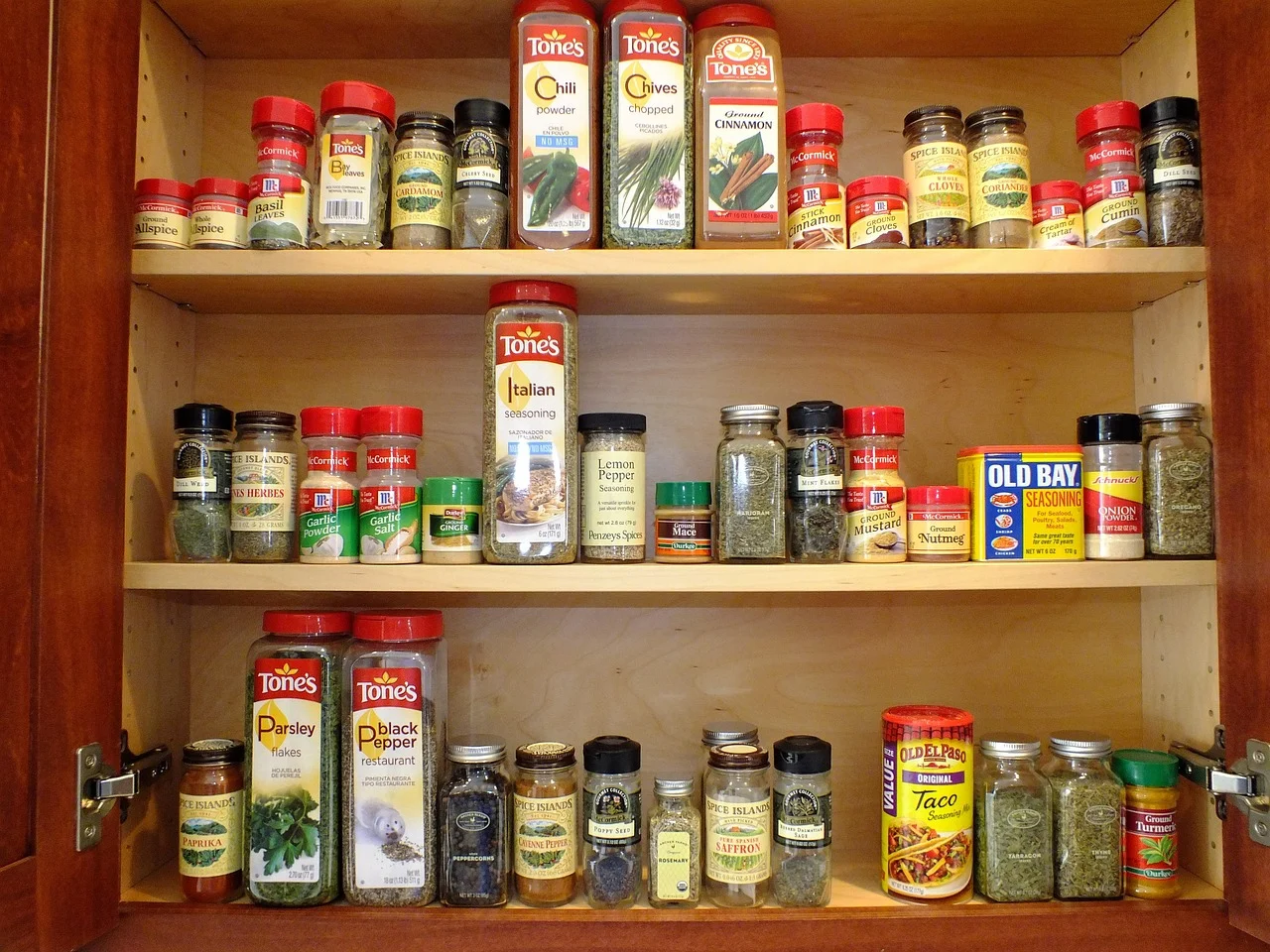You might be surprised by the versatility of spices. After all, most people consider kitchen spices only in the context of flavor. However, it is true that there are kitchen spices that fight bacteria. Let’s consider a quick history behind the science of bacteria-fighting spices.
The Use of Spices Before the Days of Refrigeration
Moving forward from the advent of fire, humans sought out ways to preserve their food. It was also soon realized that improper preservation of those foods would lead to life-ending illnesses. Our ancestors learned to rely on aromatic leaves, bark and roots as well as seeds that we might recognize today as kitchen spices. This proved to be the right choice as many of those spices are now well known for their remarkable antibacterial properties.
Early examples of spices that fight bacteria were found in Egypt and China. Egyptians used cloves and cinnamon in their mummification process. Ancient texts from China describe how their people used turmeric and ginger as a part of their holistic approach to applied healing and medicines.
How Do Kitchen Spices Fight Bacteria?
Understanding spices that fight bacteria means we should take a quick scientific look at the biology. Bacteria, as you know, are microscopic bodies that live in diverse environments. A cringeworthy fact worth noting is that bacterium absolutely thrives in our food. For the most part, bacteria is harmless.
However, we have all been made aware at some point in our lives just how dangerous the wrong bacteria can be. All one has to do is simply drop a word like Salmonella or E.Coli to see how the tone in a room or conversation changes. The mention of these foodborne illnesses gives pause, and for good reason.
So, how did spices that fight bacteria evolve? As it turns out, it simply became a protective mechanism as plants, over time, learned how to create specific compounds, such as oils and alkaloids. This metamorphic process then allowed those plants to push back against the harmful bacteria in their own natural environment. On a molecular level, there’s a touch of genius that plays out as those plants can disrupt bacterial cell membranes or even prevent bacteria from forming their own shields or protective layers. This makes bacteria less able to fight or even defend against a plant’s naturally formed bacteria-fighting capabilities.
The Most Potent Spices That Fight Bacteria
While many antibacterial spices are easy standouts in your kitchen, let’s take a closer look at the A-list of spices that fight bacteria.
-
Garlic (Allium sativum)
If it can bring down a vampire, imagine what it can do to bacteria. We are all familiar with the potent scent that erupts when cutting into or crushing garlic. This sulfur-based compound is called Allicin which is a strong antibacterial agent. Studies show that garlic can go head-to-head with the aforementioned Salmonella and E.Coli as well as other strong pathogens. As a result, garlic is often stocked in both kitchens and medicine cabinets.
-
Turmeric (Curcuma longa)
Chefs love turmeric for its golden color and taste. However, turmeric adds more than flavor. Turmeric contains Curcumin which is well known for its antibacterial properties. Curcumin prevents bacteria from forming biofilms which is essential to survival. Studies also show that turmeric extracts suppress the growth of certain bacteria, including those that are often the cause of foodborne illnesses.
-
Ginger (Zingiber officinale)
As a culinary favorite, a little ginger goes a long way when it comes to adding flavor. However, the same can be said when it comes to its ability to fight bacteria. Ginger’s compound gingerol has strong antibacterial and anti-inflammatory properties. It can even inhibit the growth of bacteria associated with stomach ulcers and dental cavities.
-
Cinnamon (Cinnamomum verum and Cinnamomum cassia)
When it comes to spices that fight bacteria, you may be shocked to find cinnamon on this list. It’s hard to hear the word and not immediately dwell on the unstoppable taste of cinnamon. It’s a veritable favorite in most any kitchen. However, you might be pleased to know that along with its mouth-watering taste cinnamon contains cinnamaldehyde. This compound disrupts the bacterial growth of Listeria, Salmonella and E.Coli. Its oil also doubles as a natural food preservative.
-
Oregano (Origanum vulgare)
Oregano oil is often used as an antibacterial agent. Oregano contains both carvacrol and thymol. These compounds are also known to have a crippling effect when it comes to pesky E.Coli, among other unwanted bacteria. The ancient Greeks also revered this spice for a variety of amusing reasons, one being that if you anoint yourself with oregano you will dream about your future spouse.
-
Cloves (Syzygium aromaticum)
Cloves are known for the compound eugenol. In addition to its antibacterial properties, Cloves can also be used as an anesthetic. Clove oil is also widely used for its ability to fight against oral pathogens.
-
Thyme (Thymus vulgaris)
Lastly, on our list of spices that fight bacteria, we find thyme. Thyme, of course, has a distinctive scent thanks to a compound called thymol. This is a strong antibacterial element that also doubles as an antifungal. It’s also commonly used in mouthwashes and disinfectants.
So, it’s true that your humble kitchen spice rack is good for more than just a quick dash of flavoring. From ancient preservation methods to modern day antibacterial applications, the role of spices and their inherent compounds demonstrates a compelling history.
Here at American Course Academy, we celebrate those who work their kitchens and spices with pride. If you’re ready to earn or renew a required food handling certificate for your workplace, you can receive full accreditation here. Our food handling courses are state approved and can be completed in a single day from any internet-connected device. Get started today.

